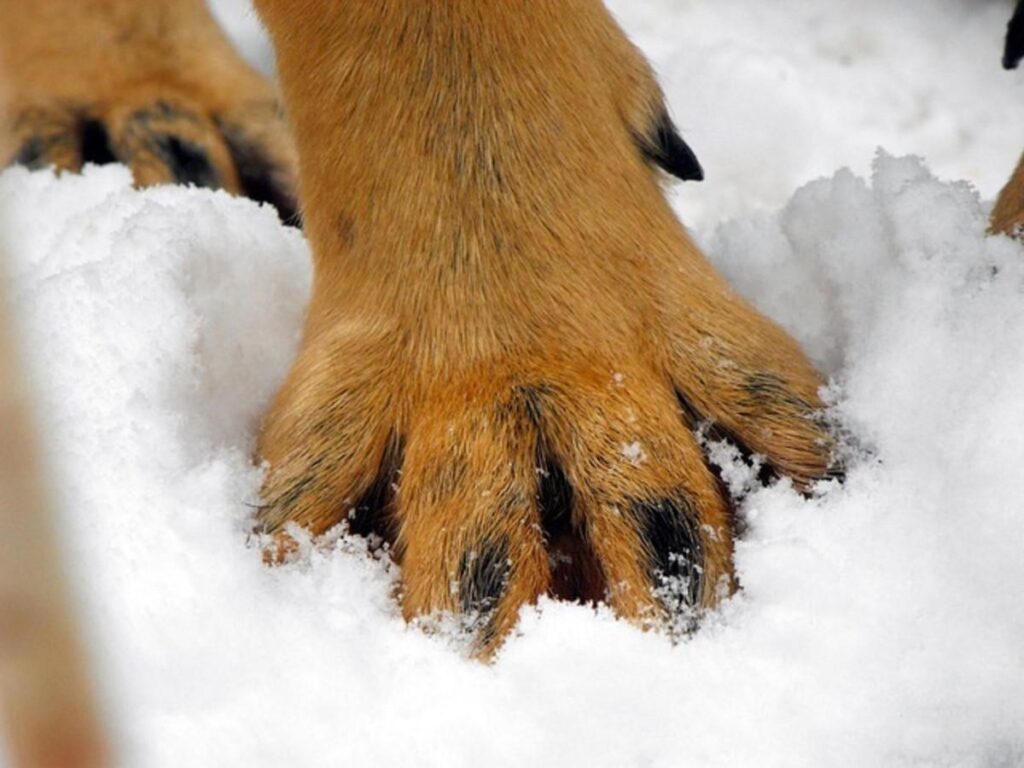Pit bulls are a breed of dog known for their muscular bodies and short coats. They are often used as guard dogs or for other types of protection because of their loyalty and protective nature.
Pit bulls have been around since the 1800s, but they only became popular in the 1980s, when they started becoming more common in homes across America.
Because they are used as guard dogs and because of their muscular bodies, many people have asked whether or not pit bulls have webbed feet. The answer is no; pit bulls do not have webbed feet.
What Is Webbed Feet?
Webbed feet are a genetic trait that allows dogs to swim faster and farther. The webbing between their toes helps them propel themselves through the water more quickly than they could without it. Pit bulls do not have this trait; therefore, they cannot swim very well.
Pit bulls are not even good swimmers’ dogs. They don’t like water in the first place and will usually panic if they find themselves in it.
If you have a pit bull who loves to swim, he has likely been taught how to do it. Most dogs will need help learning how to swim.
Is Having Webbed Feet Dangerous?

The answer is no. It is not dangerous to have webbed feet. It can be beneficial at times. Webbed feet help dogs swim faster and farther than they could without them.
Webbed feet also help dogs run faster, as they can use their legs like flippers. There is no current danger to having webbed feet. Webbing can be seen in many animals and has been around for thousands of years.
Do pit bulls have webbed feet?

No, Pitbulls don’t have webbed feet. Webbed feet are a genetic trait that allows the dog to swim faster and farther.
The webbing between their toes helps them propel themselves through the water more quickly than they could without it. Pit bulls do not have this trait; therefore, they cannot swim very well.
The American Pit Bull Terrier (APBT) was bred from fighting dogs initially imported from England by 19th-century dog enthusiast Colonel William J. Straus.
Bullfighting was popular in Spain until the sport was outlawed, and many fighting dogs were crossed with other breeds to produce better-looking specimens.
The result was the APBT, a dog with a strong jaw and muscular body. The breed became popular in America in the late 19th century when it was used as a farm dog to catch vermin and protect livestock from predators.
Why do Some Dogs Have Webbed Feet?

Webbed feet are a genetic trait found in many animals, including humans. Dogs with webbed toes have been bred for water rescue and swimming for centuries.
Webbing exists because of how DNA works: It’s like a code that determines how an animal looks, functions, and behaves (for example, if you have blue eyes or brown hair).
As genes are passed from generation to generation, they mutate—sometimes, they change slightly over time, while other times change dramatically.
In these cases, we see new traits emerge because some animals carry more than one version of something like webbing on their feet—and sometimes those versions don’t match up exactly!
These differences between individuals make them look different even though they might share similar DNA sequences at specific points in their genome (the collection of all the genes present within an organism).
This means that although two dogs may both have webbed feet due to inheriting two copies each from their parents’ genomes (one copy inherited from each parent), one could still be much larger than another due to having more muscle mass.
Why Does My Pitbull Have Webbed Feet?
There are many reasons why your pit bull might have webbed feet.
Genetics:
Some dogs are born with webbed feet, while others develop the trait later in life because of a genetic abnormality. This is more likely to occur in mixed breeds and other animals bred together over time, such as pugs and bulldogs.
Mixed breed:
Many pit bulls are mixed breeds, and their webbed feet may result from the genetics of one or both of their parents. This is especially true for dogs bred for specific traits, such as hunting and fighting.
Some breeds, such as the American Cocker Spaniel and the English Setter, are predisposed to having webbed feet. However, if you have a mixed-breed dog with webbed feet, they likely inherited the trait from another dog.
Environmental causes:
Webbed paws can also be caused by environmental factors. If your dog has been swimming or standing in water for extended periods, he could develop webbed feet. Other types of injuries to the paw, such as frostbite or chemical burns, can also cause webbing.
This is why keeping your dog away from swimming pools, lakes, and ponds containing chemicals is essential. If you suspect your dog has been exposed to chemicals, rinse his paws thoroughly with clean water.
What are the Benefits of Webbed Feet?
Webbed feet can help your dog swim faster and more efficiently. They also help protect the dog’s paws from injury, which is especially important when going through thick underbrush or mud.
Webbed feet help crawl through tight spaces, such as holes in walls or under furniture. They’re also great at digging when needed.
Webbed feet are also helpful for climbing. Webbed feet help the dog better grip slippery surfaces, such as water, mud, and snow.
Webbing between all four paws makes it easier for your dog to run through deep snow and soft sand without sinking into it.
Some Dogs with Webbed Feet:
Dogs with webbed feet are known as swimmers. The most common breeds that have webbed feet include:
- Labrador Retriever
- Golden Retriever
- Beagle
- Cocker Spaniel
- Portuguese Water Dog
- German Wirehaired Pointer
- Chesapeake Bay Retriever
- Otterhound.
FAQs:
Q: Are all dogs that have webbed feet swimmers?
A: No, not all dogs with webbed feet are swimmers. But most breeds that have webbed feet are good swimmers. This is because they’ve been bred for this purpose over time, and their physical characteristics reflect this.
Q: What’s the difference between webbed feet and flippers?
A: Webbed feet are a physical characteristic that allows dogs to swim more efficiently. They have webbing between their toes, which makes it easier for them to paddle and propel through the water.
Flippers are also a physical feature, but they don’t have the same function as webbed feet; penguins use flippers as a means of swimming.
Q: Do Pitbulls have hare feet?
A: Pitbulls have hare feet. The word here refers to the shape of their paws, which are longer and narrower than other breeds. Pitbulls’ paws are also slightly curved, unlike other dogs who have straight-shaped paws.
Q: Are webbed feet genetic?
A: Webbed feet are a genetic trait that can be passed down from generation to generation.
You can typically tell if a dog has webbed feet by looking at the color and shape of its paw pads; if they have a darker color and are shaped like an oval or rectangle, then it’s likely that your dog is a webbed-footer.
Q: Do Dobermans have webbed feet?
A: No, Dobermans do not have webbed feet. They are a type of dog with straight-shaped paws, like many other breeds.
